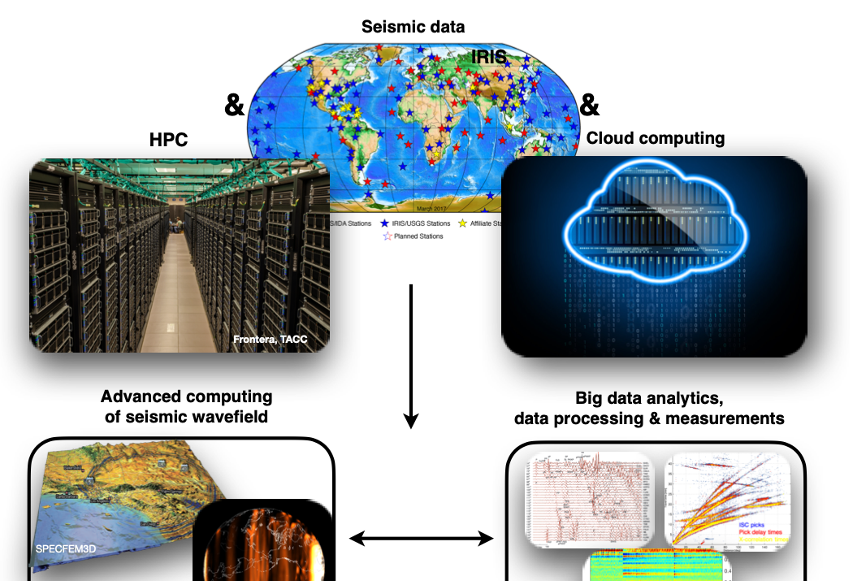Computational Infrastructure for Geodynamics (CIG) is a community-driven organization that advances Earth science by developing and disseminating software for geophysics and related fields.
Looking for our new website?
Check the url in the browser window to verify you are at geodynamics.org.
The new url for the contents of this website will be archive.geodynamics.org.

Representation of the unified and interconnected SCOPED Cyberinfrastructure.
Seismic waves are our primary tools to explore the multi-scale structure of Earth— from its surface down to the inner core—and its wide range of processes, including earthquakes, volcanic activity, glacial processes, oceanic and environmental processes, and human-caused processes such as hydraulic fracturing or nuclear explosions.
The unprecedented growth of data and computational power have formed two pillars of seismology during the last decade. While numerical tools allow us to take full 3D complexity of wave propagation in seismic source and structural modeling, exponentially grown seismic data from traditional broadband seismometers as well as emerging instruments (i.e., distributed acoustic sensors, MERMAIDs, nodal arrays, etc.) offer new opportunities to monitor seismic activity and to improve resolution beneath continents and oceans. We need high-performance and Cloud computing to efficiently process large data sets and accurately model them. Seismic workflows involve various pieces depending on the problem, from retrieving field data from data repositories to processing and modeling them. Data processing requires easy access to large data sets, which becomes much more challenging for (near-) real-time monitoring studies, while seismic modeling of source and structure often deals with iterative workflows involving large earthquake or noise data, which can quickly turn out to be overwhelming tasks for researchers. The steep learning curve of modern computational technics and workflows, together with computational challenges, leaves limited time for students and researchers to focus on seismological and broader Earth science interpretations.
SCOPED ... [continued]
![]() click for citation information
click for citation information
No Workshops are currently scheduled.
No Webinars are currently scheduled.
Published papers this year using CIG software?
Tell us about it! submit